During the late 1990s, thrice a week, at 6.45 AM the husband would drop me at the State Bus terminus to enable me to take the first bus to Nalsarovar, a wetland and a bird sanctuary, 60 kilometres from Ahmedabad. If I missed the only bus to the region, I had to either take a connecting bus (which was very time consuming) or ride 35 plus kilometres on a Chakda from Sanand (the nearest town from Nalsarovar). The mornings were beautiful, I in my late-twenties did not mind missing the bus to enjoy that refreshing yet risky Chakda (ingenious hybrid convertible automobile) ride. The region has been a rice belt and monsoons were particularly beautiful. All around the earth adorned best shades of green, the musky wind travelling through waterlogged paddy fields was refreshing, spotting pairs of Sarus cranes through the layer of settling fog was a norm. The world seemed perfect for that brief 45 minutes that culminated to a rather cheerful welcome by the gang of kids awaiting my arrival!! It was a ritual I looked forward to, I loved my work with the children of migrant labourers!! We were working on developing sustainable solutions to address the chronic issue of access to mainstream education by these children of ever travelling labour. One such heuristic approach was launching community-supported hostels at village level where we retained the children while their parents travelled for work to undetermined regions.
Food is crucial to any hostel, more so when it is for children whose parents found hard to feed two square meals. Food enabled me to break the ice and bond with these kids of mine (there were almost 300 of them). Moong beans, horse gram, toor dal, potatoes, onions, brinjals remained staples at our rather penurious hostel kitchen. Khichri-shaak and Rotli/ Bhakhri for dinner; Kathol for breakfast was standard menu while lunch was their mid-day meal at school. Remote and arid area means the population ate onions and potatoes more often. In Gujarat one of our favourite ways of enjoying bataka/potatoes is making this stewed Lasaniya Bataka/Garlic Potatoes cooked over a wood-fired chula. An unapologetically hot and garlic laden shaak/curry you will find at most roadside restaurants offering Kathiyawari cuisine. A shaak you need to eat at least once in a lifetime to experience the charm of frugal ingredients. On the menus of highway hotels, Lasaniya Bataka sits next to another epic the Sev-Tameta nu Shaak. Most of us familiar with Kathiyawari cuisine know how revered Lasaniya Bataka is, a very rooted and rustic way of cooking potatoes that never fails to wake up the senses. The frugality of such food preparations makes them a regular occurrence at most of the communal eating places. So at our hostels too, we would have Bataka paired either with tomatoes or brinjals or onions or just garlic. On occasions when we had evening meetings with communities after they returned home after a days work on farms, I would take the last bus departing from Nalsarovar. Those late evening meetings allowed me to join the kids for dinner. Their playtime coming to an abrupt end as the bell rang, announcing the time for dinner. Kids sated down in a neat pangat on a shetranji/dhurrie, as we all waited to be served, waiting to mop, slurp some smacking hot lasaniya bataka with Khichri and Bhakhri in a room bursting with carefree laughter of kids playing pranks on any of us or their peers!! Life has been kind and beautiful indeed!!
The recipe shared here is how my Kathiyawari Bhabhiji makes Lasaniya Bataka. The colour should have been bright red but the quality of chilli I had access to here in Singapore post Covid makes the shaak look yellower than red. Hopefully, I’ll change the image once I manage to shoot with proper ingredients.
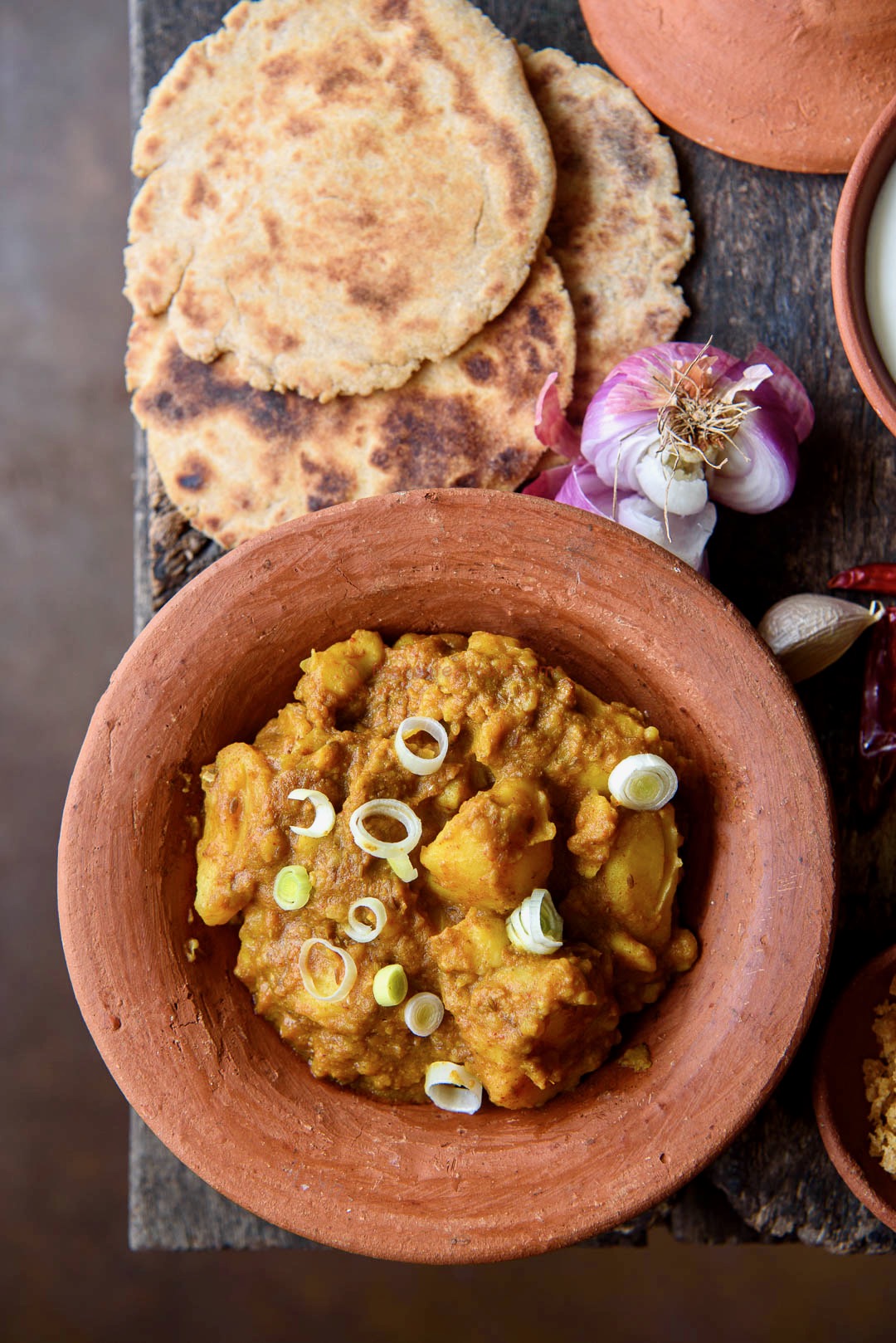
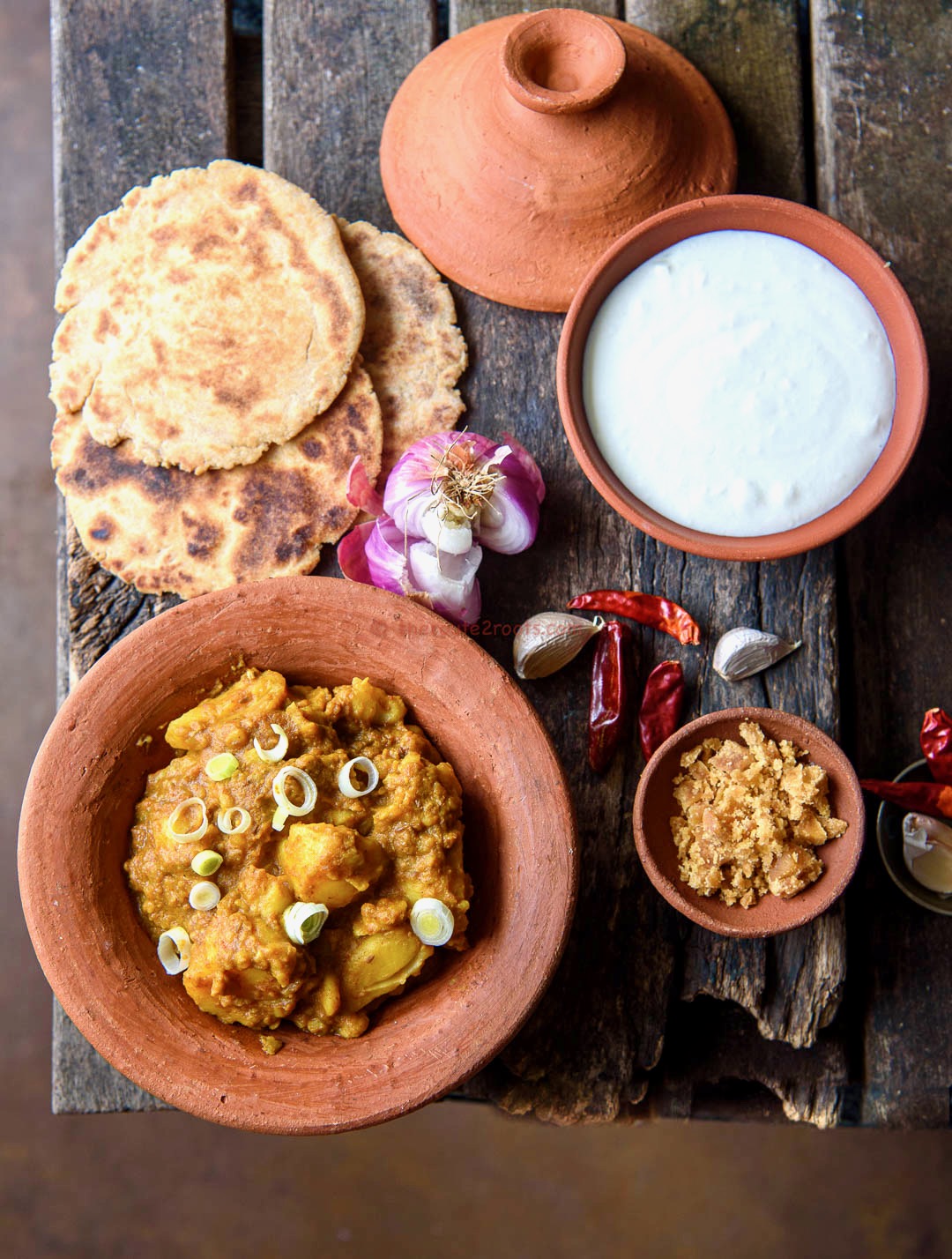
Lasaniya Bataka - Potatoes stewed in garlic-chilli broth
Ingredients
- 4 large potatoes
- 10-12 cloves of garlic, the small ones we get in India
- 2-3 teaspoons red chilli powder, we use a mix of Kashmiri and reshampatti
- 1/2 teaspoon turmeric/haldi powder
- 2 teaspoons dhana-jeeru powder/coriander and cumin powder
- 1/2 teaspoon cumin seeds
- 1/4 teaspoon hing/asafoetida
- 3 tablespoons oil
- salt to taste
- 2 tablespoons chopped coriander to garnish
Instructions
In a mortar and pestle pound the garlic cloves and red chilli powder to a fine paste.
Wash, peel and chop the potatoes into equal sized cubes. Do not chop them small.
Place a kadai on a medium flame.
Once it warms up, add the oil. Allow the oil to heat up.
Add cumin seeds and hing.
As the cumin sizzle, add the pounded garlic and fry it for couple of minutes until the raw smell of garlic fades.
Add the turmeric and coriander+cumin powder. Sauté the spices for half a minute.
Stir in the chopped potatoes. Mix them well in the cooking garlic and spices.
Add 2 cups of water and salt. Mix it all well.
Cover and simmer the potatoes. The finished shaak will have a thick curry, add warmed water if needed.
Cook till the potatoes are cooked yet firm, there will be some curry and some oil floating on the top.
Turn off the flame, garnish with coriander and serve hot with Bhakhiri or bajra/jowar rotla.
Notes
The Lasaniya Bataka is a red-red looking shaak. Thanks to Covid I did not have my blend of chilli powder I bring from Ahmedabad every year in May. As mentioned use Kashmiri chilli powder for colour and reshampatti (or similar) chili powder for heat. Cook the Shaak on medium flame. There has to be some curry as well. Mine got absorbed during the shoot.🤦🏽♀️


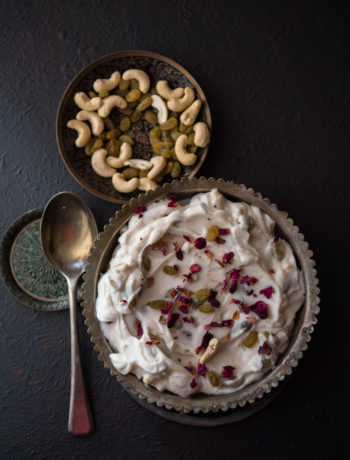
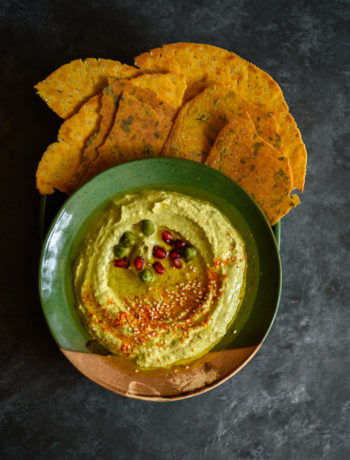
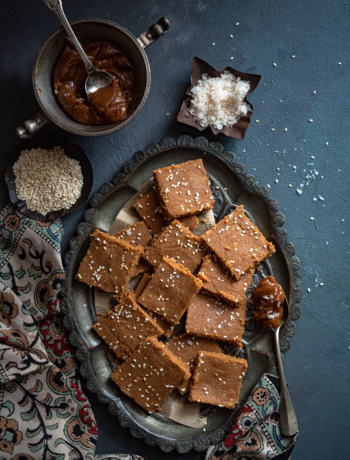
2 Comments
Chaitali Thakkar
November 15, 2020 at 7:47 amThis recipe is amazing. So simple to prepare but packed with flavor. I have prepared this multiple times since you posted it. Thanks for sharing and also for your amazing blog where I learn so much about the culture I was born into.
Sheetal
November 29, 2020 at 7:38 pmThank you so much for writing in Chaitali. Yes, this recipe does work like a charm. Delighted to know that this space helps you connect with our collective roots.
❤️